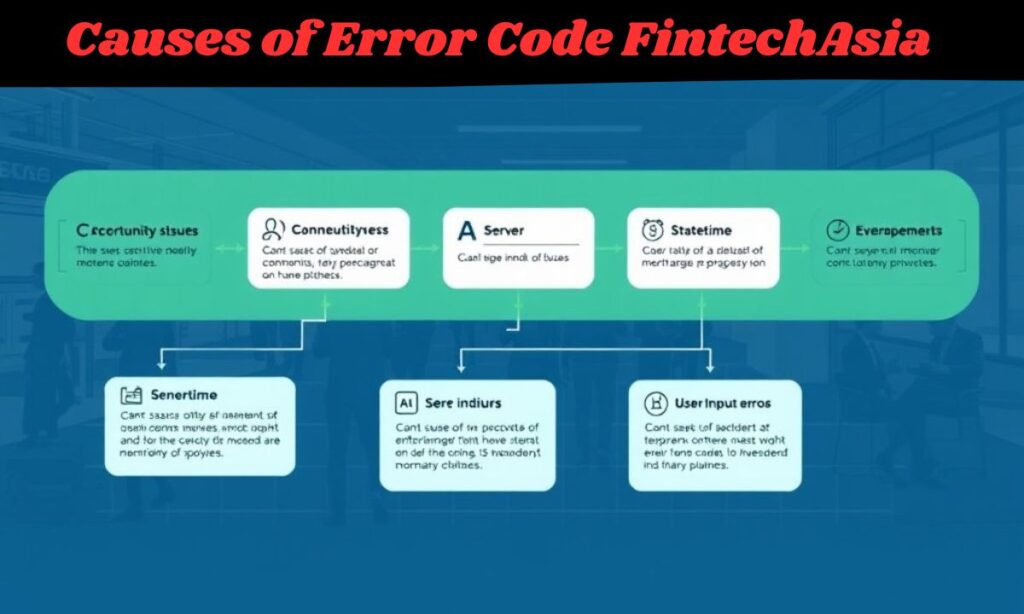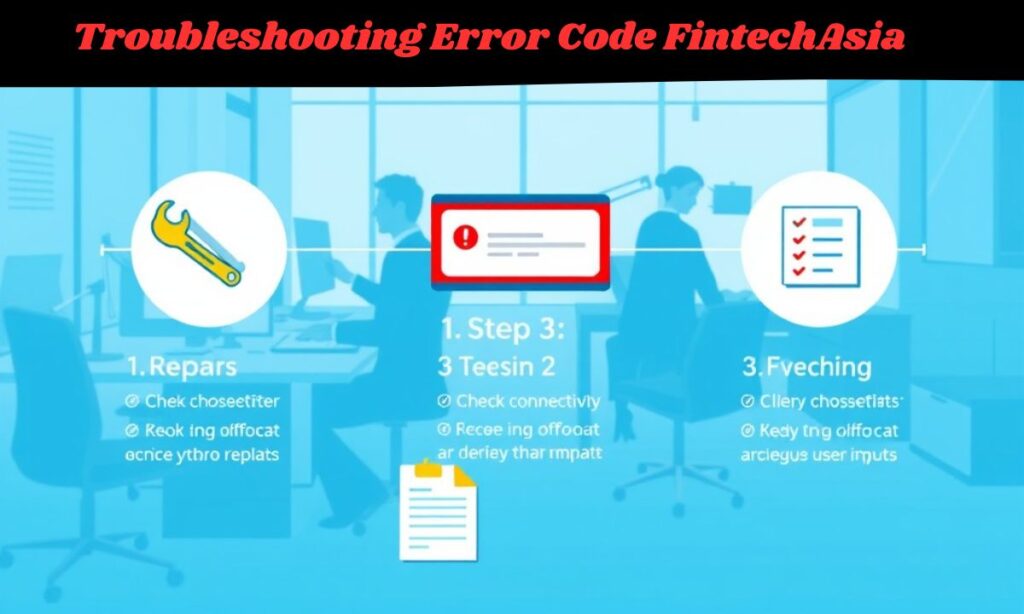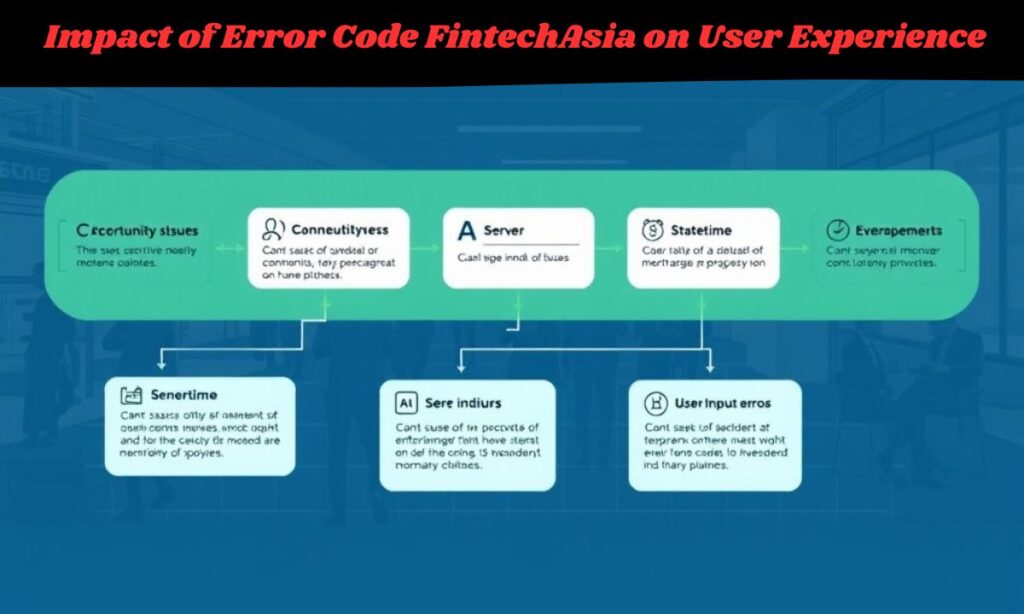In the fast-evolving financial technology landscape, encountering error codes is inevitable. One such recurring issue is Error Code FintechAsia. This guide dives deep into its causes, implications, and resolutions.
Understanding these codes helps improve the customer experience in fintech while ensuring smoother transactions and platform operations.
What is the Error Code of FintechAsia?
Error codes in FintechAsia are alphanumeric signals generated by systems to identify specific problems. These codes streamline troubleshooting and enable technical teams to address malfunctions efficiently.
Error codes typically indicate:
- Authentication issues, such as login failures or unauthorized access.
- Payment gateway errors, which occur during transaction processing.
- Server overload, resulting in system crashes.
- API connectivity issues, disrupting data flow between systems.
Understanding these codes is critical for developers, users, and financial institutions relying on FintechAsia’s services.
Key Points About Fintech Asia Error Codes
- Purpose: Identify malfunctions quickly.
- Categories: Payment issues, server problems, and security vulnerabilities.
- Resolution: Prompt identification and fixing ensure minimal impact.
- Prevention: Regular updates and monitoring reduce occurrences.
Card Decline Codes

Card decline codes indicate issues during card-based transactions. These codes highlight:
- Insufficient funds.
- Incorrect card details.
- Bank-imposed restrictions.
Examples:
| Code | Meaning | Suggested Action |
| 01 | Insufficient funds | Check account balance |
| 05 | Do not honor | Contact issuing bank |
| 12 | Invalid transaction | Verify transaction details |
Local Payment Method-Specific Codes
Certain error codes arise from local payment methods, particularly in specific regions.
- Code 201: Payment declined due to currency mismatch.
- Code 202: Unsupported payment type.
- Code 205: Exceeded transaction limit.
Bank Network Errors
Bank network errors often stem from backend communication failures. These include:
- Error Code 301: Network timeout.
- Error Code 302: Invalid routing number.
- Error Code 305: Server unavailability.
API Error Codes
APIs play a crucial role in fintech operations. API error codes highlight integration issues or resource overuse.
Common Examples:
| Code | Description | Resolution |
| 701 | API limit exceeded | Optimize API usage; upgrade plan |
| 702 | Invalid API key | Verify API key credentials |
| 703 | Connection error | Check API endpoint configuration |
Examples of Fintech Asia Error Codes]
Error Code 101 indicates a connection timeout caused by unstable internet or server issues. It often resolves by checking the network or retrying later.
Error Code 202 signals unauthorized access due to incorrect login details. Double-checking credentials or resetting the password usually fixes this.
Common Error Codes in FintechAsia:
- Error Code 500: Internal Server Error
- Cause: Overloaded servers or system bugs.
- Solution: Conduct server maintenance and apply software fixes.
- Error Code 404: Page Not Found
- Cause: Broken links or outdated URLs.
- Solution: Update or redirect incorrect links.
- Error Code 401: Unauthorized Access
- Cause: Incorrect login credentials or access attempts.
- Solution: Verify credentials and enhance authentication protocols.
Causes of Error Code FintechAsia

Network issues like unstable internet or dropped connections often trigger errors. These interruptions can halt transactions or disrupt API communications.
System-related problems such as server overloads or outdated software also contribute. User input errors, like entering incorrect details, are another frequent cause.
Network Connectivity Issues
Poor or unstable connections often disrupt transactions.
- Symptoms: Timeout errors, API connection failures.
- Resolution: Improve network reliability and reduce congestion.
Server Overload
High traffic volumes can crash servers.
- Symptoms: Delayed responses, system unavailability.
- Resolution: Implement load balancing to distribute traffic.
Software Bugs and Glitches
Code inefficiencies result in unexpected failures.
- Symptoms: Recurrent crashes, unhandled exceptions.
- Resolution: Regular testing and debugging.
User Input Errors
Manual errors during data entry create issues.
- Examples: Incorrect account numbers or invalid formats.
- Resolution: Simplify UI and add input validation.
Integration Problems
Third-party integrations may fail due to incompatibility or poor API implementation.
- Symptoms: Mismatched data, transaction delays.
- Resolution: Align system configurations and test thoroughly.
Troubleshooting Error Code FintechAsia

Start by checking the network connection. A stable internet connection can resolve many basic errors. Verify system configurations and ensure all parameters align with the platform’s requirements.
For API-related issues, review integration settings and endpoints. Ensure authentication credentials are accurate and updated. If problems persist, consult the platform’s support team for specialized assistance.
System Checks and Maintenance
Conduct routine inspections to identify weak points. Ensure:
- Servers are updated.
- Legacy systems are upgraded.
- Configurations meet platform standards.
Load Balancing
Distribute server traffic evenly to avoid overloads.
- Tools like NGINX or HAProxy help manage loads efficiently.
- Monitor performance metrics to adjust dynamically.
Quality Assurance and Testing
Regular testing prevents major issues:
- Use automated testing tools.
- Test for data synchronization, API integration, and user authentication.
Enhancing User Interface
User-friendly designs reduce input errors.
- Implement dropdowns for selections.
- Provide real-time error prompts.
- Ensure mobile compatibility.
Impact of Error Code FintechAsia on User Experience

Error codes significantly affect user trust and experience.
- Frustration: Users may abandon platforms after recurrent issues.
- Lost Revenue: Failed transactions reduce business profits.
- Brand Damage: Unresolved errors harm reputation.
To maintain trust, resolve errors promptly and ensure system stability.
Preventive Measures for Error Code FintechAsia
Frequent System Maintenance
Regular updates and checks minimize errors. Ensure:
- Security patches are applied.
- Servers are optimized for peak traffic.
Strong Security Protocols
Prevent security breaches through:
- Two-factor authentication.
- Regular audits and penetration testing.
Comprehensive Testing
Thorough testing detects potential problems early:
- Validate all integrations.
- Simulate high-traffic conditions.
Effective Monitoring and Alerts
Real-time alerts help address issues before escalation:
- Use monitoring tools like Datadog or Splunk.
- Set thresholds for resource usage and error codes.
User Education
Educating users reduces input errors and enhances confidence:
- Provide troubleshooting guides.
- Offer accessible customer support.
Frequently Asked Questions
How quickly should Error Code FintechAsia be addressed?
Immediately, Delays can affect transactions and user trust.
What causes most transaction failures in Asian markets?
Network connectivity and authentication issues are primary causes.
Can user input errors be prevented completely?
No, but user-friendly designs and validations minimize them.
How often do API errors occur in financial systems?
Frequently, especially during peak usage or poor integration.
What role does system maintenance play in error prevention?
It ensures systems run smoothly and securely.
Conclusion
FintechAsia error codes are an integral part of maintaining platform functionality. By understanding these codes, users and developers can mitigate issues effectively.
Implementing preventive measures, like regular maintenance, robust testing, and user education, minimizes occurrences. In the dynamic fintech landscape, proactive management of error codes is essential for a seamless, secure, and satisfying user experience.

Hassan is a talented content writer and digital marketer with expertise in SEO, social media management, and online marketing.





